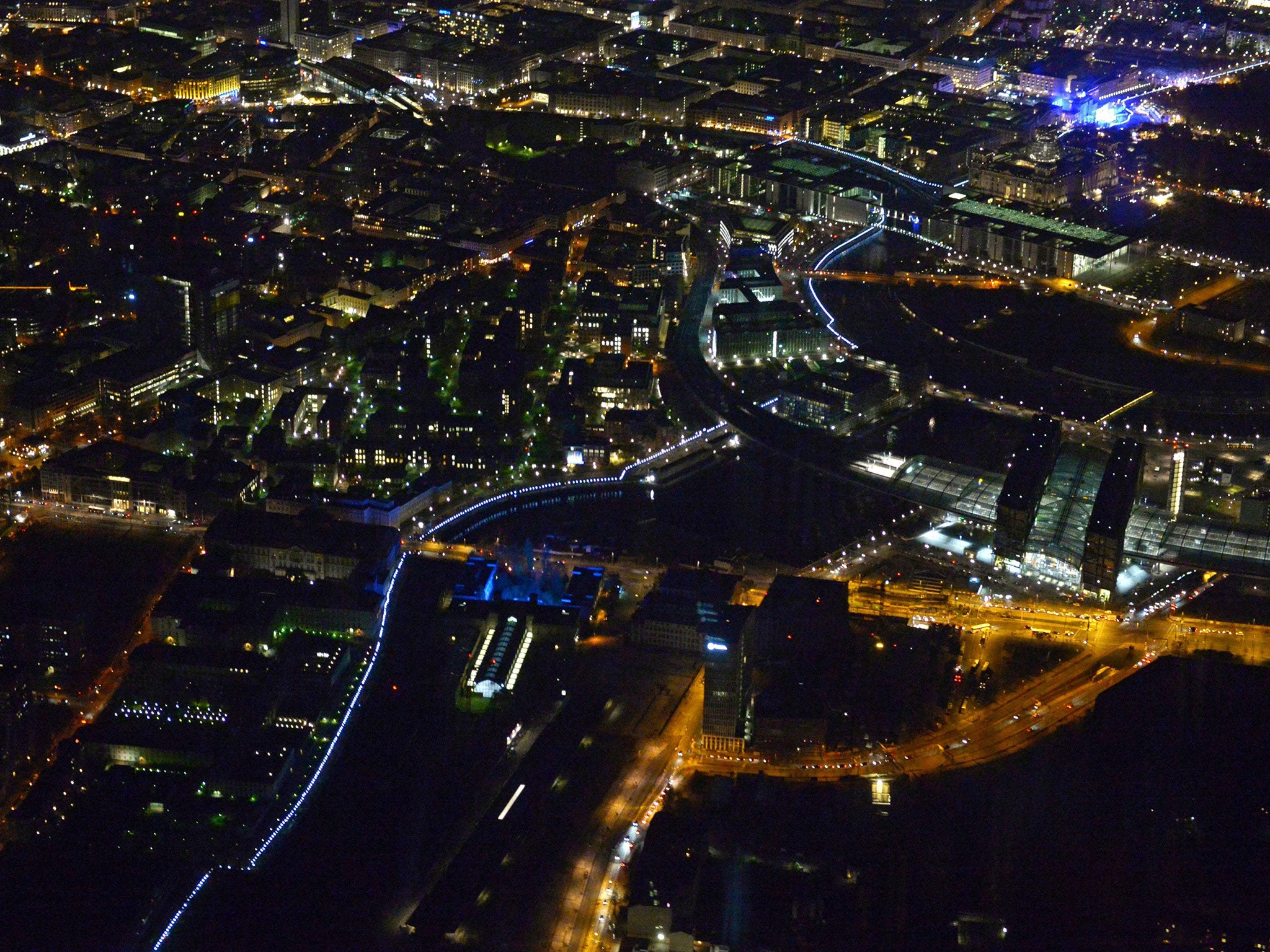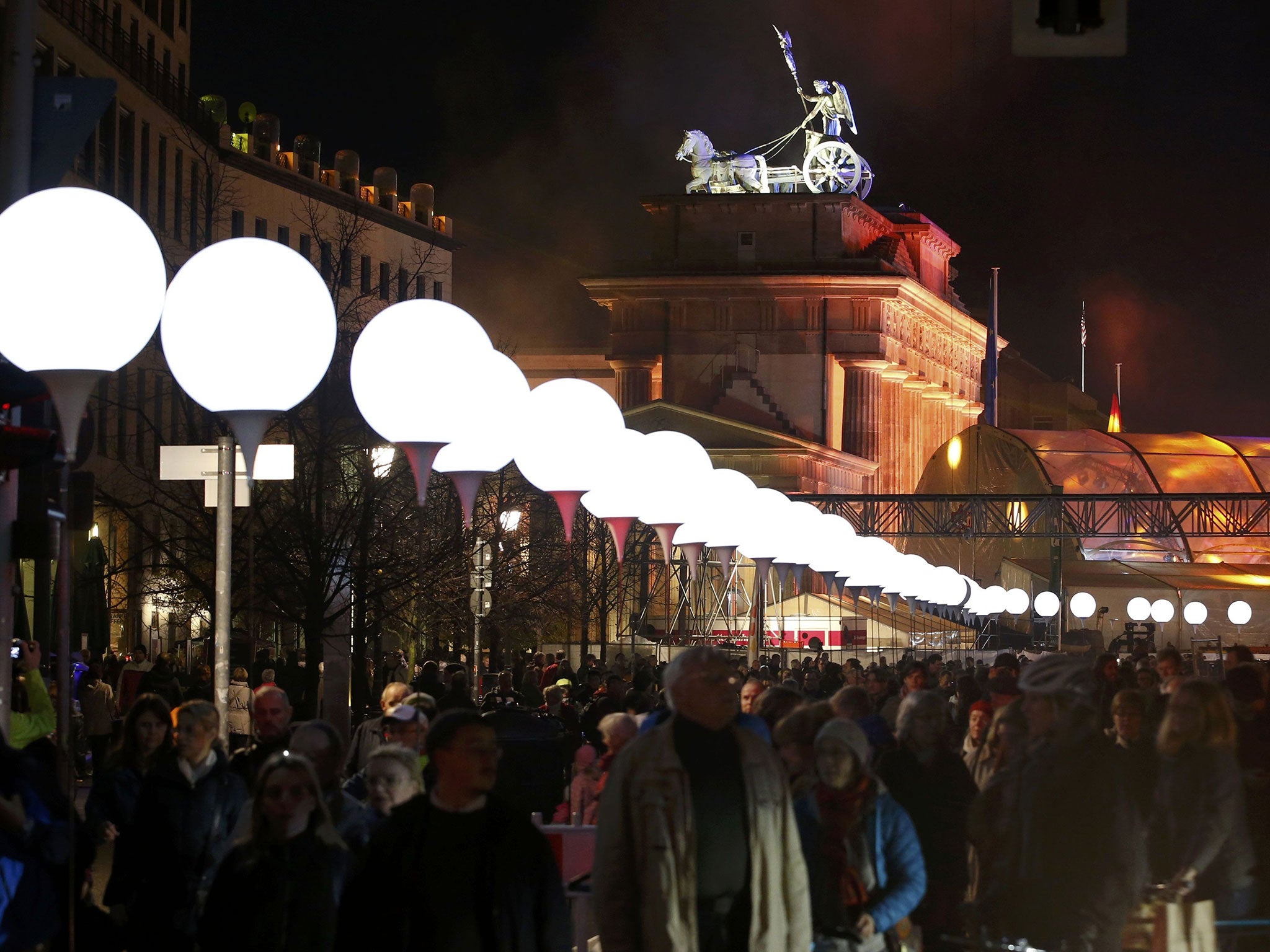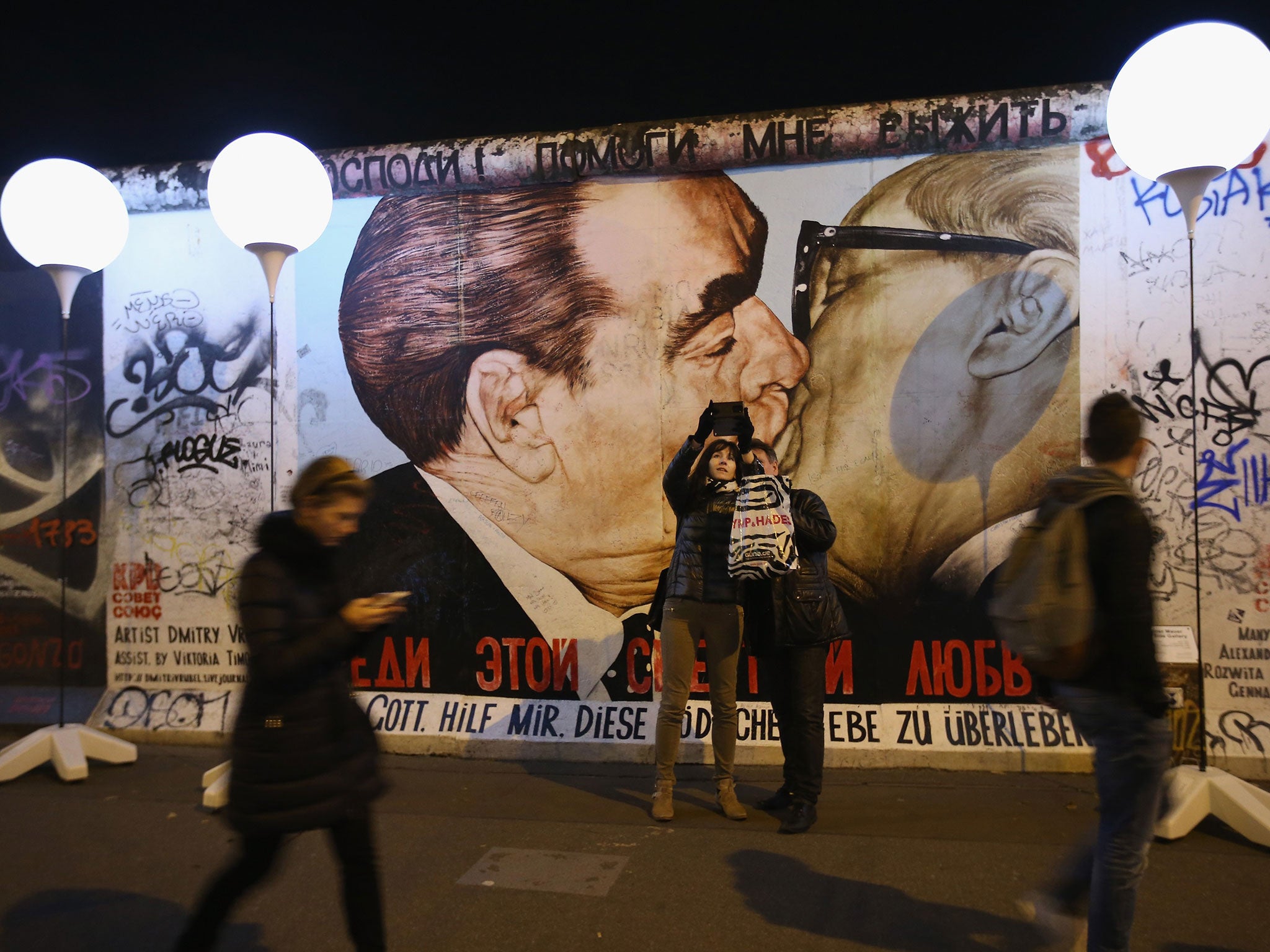Fall of the Berlin Wall: Balloons replace barbed wire as illuminated installation marks route 25 years after the fall
8,000 helium balloons will line the nine-mile route

Berlin’s new wall has taken far longer to erect than the one it commemorates. The original, infamous wall, a barbed-wire line in the road at first, then a fence, and finally a guarded and fortified concrete partition, appeared almost overnight in August 1961; then, in a confused series of events 25 years ago today that are still misunderstood, turned suddenly porous and, amid quite extraordinary scenes, was torn down.
Berliners and the world at large have been sharing remarkable pictures taken from the air of their new wall, a nine-mile line of 8,000 illuminated white helium balloons. The installation, by artist Christopher Bauder and his film-maker brother Marc, traces the old border between east and west. Tomorrow evening, during a concert at the Brandenburg Gate, the biodegradeable balloons will be released into the air and, once again, the wall will disappear.
It was at a live televised news conference in the wake of growing civil unrest that, in the early evening of 9 November 1989, Günter Schabowski, a spokesperson for the East German Politburo, said East Germans could begin to travel to West Germany and West Berlin. When questioned on the crucial detail of when this would be permitted, he unconvincingly replied: “To my knowledge, this is immediately, without delay.”
But nobody had told the Berlin Wall’s border guards, who were suddenly faced with mass crowds at the checkpoints, among them a 35-year-old Angela Merkel. Shortly before midnight, still desperately waiting for orders from above to the contrary, one guard, Harald Jager, ordered his gate open at Bornholmer Strasse. Eventually they all fell, and a great event that wasn’t quite supposed to have happened, had happened.
Berlin bureaucracy meant that the Lichtgrenze (Light Border) installation took the Bauder brothers seven years to bring to completion. The line of balloons leads past the obvious places: Checkpoint Charlie, the Brandenburg Gate. Today afternoon, a little boy was riding his bicycle down the Zimmerstrasse where the tourists gather, slaloming in and out of the balloons, crossing the old partition about once every four seconds, becoming shy when half the queue for the museum turned their filming iPhones on his unknowingly poignant stunt.

But the balloons also stretch out into some quite ordinary areas, and have given many ordinary Berliners a quite extraordinary history lesson. On a nondescript patch of grass in the Gesundbrunnen district yesterday, Isi Gersten, a 24-year-old jewellery designer, was throwing her stick high over the partition while her labrador darted across to the other side to fetch it.
“It’s funny, isn’t it?” she said. “We come here every day and do the same. When this [new] wall arrived, it just made me think, gosh, you know. I knew it was along here, but didn’t know it was right here.”
Actually, it wasn’t right there, but the precise old route now has houses and shops instead, so it is as close a fit as possible. But Ms Gersten is nothing if not a typical Berliner, and that is instructive in and of itself. Twenty-five years on from separation, 25 is an important number here.
Immediately after reunification, many East Germans flocked west in pursuit of better jobs and better lives. But more recently, Germany’s relatively cheap capital is a magnet for creative types. It is among Europe’s youngest cities, with 25 per cent of the population under 25 years of age – almost a million people.
“We just don’t think about it, you know,” said Nico Nauer, 29, and a student. “We don’t remember it. Germans are aware of our history. We don’t ignore it. We don’t forget about it. But this division that happened to us, it is not the thing for us to think about.”

At various points along the wall of balloons, television screens play specially commissioned films, reminding that the wall that made West Berlin an island in the Communist east was merely the most potent symbol of the much larger Iron Curtain that divided east from west – a structure that also crumbled in those heady months.
By the Brandenburg Gate, where the biggest of these screens sits, hundreds of Germans – and lots of tourists too – have been standing in silence watching films. One shows hordes of East German refugees clambering over the walls of the West German Embassy in Prague, where they briefly lived in fear and squalor. Another shows families of Hungarians rushing for a gap in the border that had suddenly opened up, with only the clothes they were wearing but with broad smiles on their faces, and their babies in their arms.
“Even today when I walk through the Brandenburg Gate, there’s a residual feeling that this wasn’t possible for many years of my life, and that I had to wait 35 years to have this feeling of freedom,” Chancellor Merkel said last week. “That changed my life.”
There was much talk in 1989, as the borders opened all across Europe and waves of people poured across them, of the event being “the end of history” – the end of humanity’s long walk to a liberal, democratic freedom. We now know that to be false, and as if we needed reminding, there appeared Mikhail Gorbachev today, who not so long ago was thought to be nearing the end, setting his handprints in cement for a new exhibition at Checkpoint Charlie and warning of a new Cold War.
Anniversaries do not, of course, have any real significance: they are merely a chance to reflect. But it is rather extraordinary that this celebration of the end of the Berlin Wall should fall on the same day as the First World War centenary commemorations reach their sombre zenith.
Wreaths will be laid at the Cenotaph at Whitehall and around the sprawling cemeteries of Europe; then in the evening the Berlin Wall will lift up into the sky and disappear. The remarkable, bloody story of the 20th century will be told in a single day.
Join our commenting forum
Join thought-provoking conversations, follow other Independent readers and see their replies
Comments
Bookmark popover
Removed from bookmarks